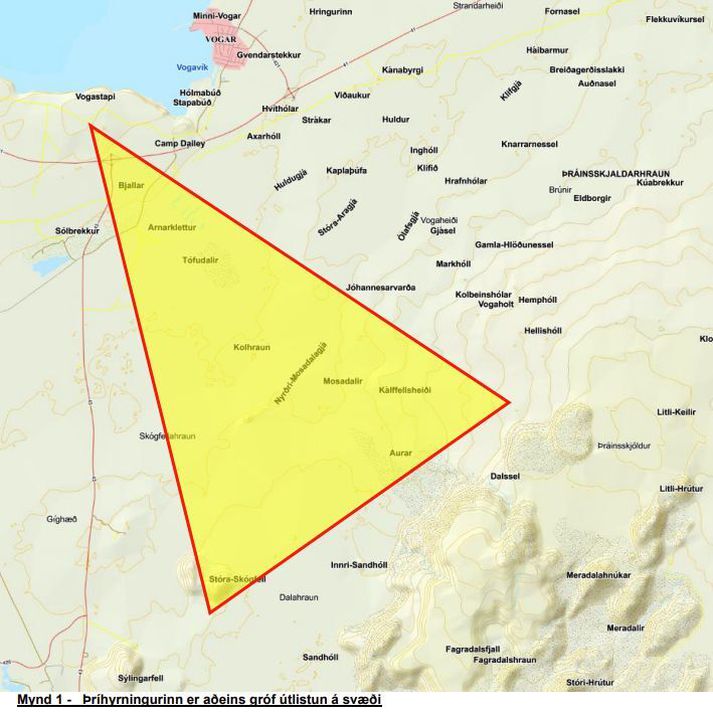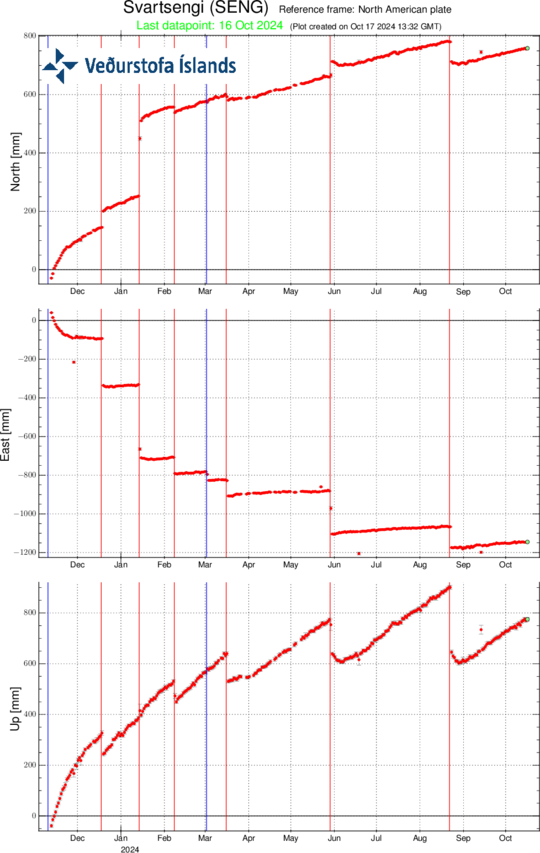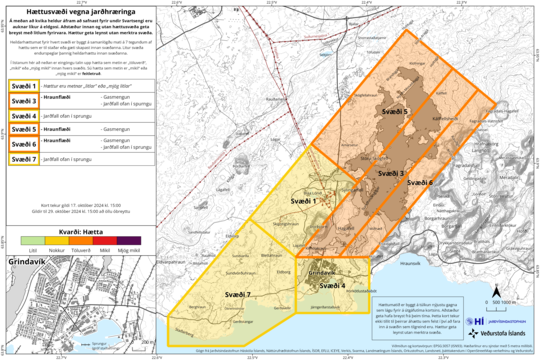- Thread starter
- #521
VIew from the Sylingarfell cam reminds me a little of the Holuhraun field at Bardarbunga in 2014, only that was in the boonies. I wish this was.

The foreground flow is what's heading for the plant. The newer one, in back, could eventually cross the road north of the road and reach the transport pipes.
Looks like that insulation they did back in February after the pipe damage will finally get tested tonight.

The foreground flow is what's heading for the plant. The newer one, in back, could eventually cross the road north of the road and reach the transport pipes.
Looks like that insulation they did back in February after the pipe damage will finally get tested tonight.









